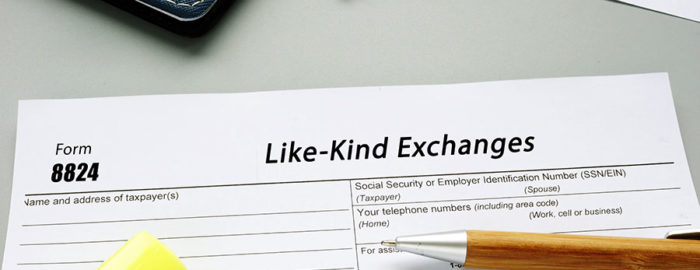The tax benefits of real estate investing are attractive and investing with partners in an LLC is a popular way to grow your wealth with real estate, but partnerships entail certain challenges. When it comes time to sell and some of the partners want to take advantage of a 1031 exchange to continue growing their investments while deferring taxes, while others want to cash out, what can you do?
Limited liability companies (LLCs) are great for investors in that their income is taxed as “pass-through income” and they can defer capital gains taxes by using like-kind exchanges. However, 1031 exchanges have several governing clauses that determine how exchange transactions work and which LLCs are eligible for 1031 swap transactions.
Because partnership LLCs present significant tax planning challenges for partners and their tax advisers, the IRS doesn’t allow partners to sell or dispose of their partnership interests while deferring taxes if they acquire like-kind replacement property. However, there’s a workaround in what is known as a “drop and swap” 1031 exchange.
What Is a 1031 Drop and Swap?
Drop and swap allows real estate investors to “drop” their ownership structure out of an “entity level” to a co-ownership – turning former partners into tenants in common. When the property is sold, the proceeds are divided proportionally, allowing co-owners to then either cash out and pay their taxes, or reinvest into another investment property through a qualified intermediary (QI) and still defer taxes.
In these drop and swap transactions, co-owners and multi-member or partnership LLCs can sell a property, allocate the proceeds, and still purchase a new property.
Are Drop and Swaps Legal?
Yes, a drop and swap is legal. Partnership interests fall under the definition of personal property, which unfortunately can’t be exchanged under the Internal Revenue Code IRC 1031 and can’t be used to acquire real estate of a like kind.
However, a partnership can still do a 1031 exchange of investment property on the entity level, meaning that the entire partnership has to sell the relinquished property, purchase the replacement property and still defer taxes for as long as it remains intact.
The reason for this is that Section 1031 requires that exchanges of partnership property be handled by the same taxpayer, which applies to partnerships as long as they do not change their compositions prior to acquiring a new property as described above.
1031 Exchange with Multiple Owners
Assets held by LLCs, multiple partners and tenants in common can be exchanged in 1031 exchanges as long as each owner mutually agrees to relinquish the property and complete a 1031 exchange.
Can I Sell a Property I Co-Owned and Do a 1031 Exchange with Just My Portion?
Yes, as long as all co-owners mutually agree to sell the property. However, if you don’t employ a drop and swap, you might be liable for capital gain taxation.
Dissolution of Partnership in a 1031 Drop and Swap Example
Consider the following scenario. Mark, Matt and Jack are partners in an LLC that owns real property. All three partners agree that they want to sell the real estate but disagree on what to do with the proceeds.
Mark and Matt want to roll the proceeds into a new property through a 1031 exchange, while Jack wants to take the cash generated from the sale.
Two of the following scenarios may happen:
1. The real estate is sold by the partnership LLC, and the proceeds will be distributed to Mark, Matt and Jack, and all parties will be taxed. While this is acceptable to Jack, Mark and Matt would be left with less money to invest in a new property.
2. The real estate is exchanged through a 1031 exchange, with the relinquished property being exchanged for a new one. No cash is received as all equity went into the acquisition of the new property, and thus no taxes were assessed. While this is acceptable to Mark and Matt, Jack isn’t allowed to cash out.
3. The drop and swap exchange accommodates the partners goals allowing Jack to transfer his membership interest to the LLC (Mark and Matt) and receive a percentage ownership interest in the property that’s equivalent to his relinquished membership interest.
This “drops” the ownership of the real estate from the “entity level” to tenancy in common interest (TIC) between an LLC (Mark and Matt) and Jack. When the property is eventually sold, the co-owners will be allocated the proceeds pro rata. Jack would receive cash from the title company and pay taxes, and the LLC (Mark and Matt), can transfer their proceeds to the qualified intermediary and swap them into a new property, deferring taxation.
It is worth noting that the standard 1031 transaction rules and time frames apply to an LLC looking to perform a like-kind exchange.
A potential forth. more complicated option exists for partners in an LLC, who want to roll into different properties, that is the reverse version of drop and swap, commonly referred to as the “swap and drop“.
Takeaways
Drop and swap 1031 exchanges are useful for dissolving partnerships, where parties want to go their separate ways, cash out or simply invest in different properties.
Be sure you speak to your CPA and attorney about this strategy well before you attempt to restructure your entity and sell your property to ensure you are in compliance with the 1031 exchange IRS rules and regulations.
If you’re interested in exploring the option of Buying a Home in Columbus, Ohio please give us a call at 614.332.6984 and we’d be happy to assist you!
The Opland Group Specializes in Real Estate Sales, Luxury Home Sales, Short Sales in; Bexley 43209 Columbus 43201 43206 43214 43215 Delaware 43015 Downtown Dublin 43016 43017 Gahanna 43219 43230 Grandview Heights 43212 Galena 43021 Hilliard 43026 Lewis Center 43035 New Albany 43054 Pickerington 43147 Polaris Powell 43065 Upper Arlington 43220 43221 Westerville 43081 43082 Worthington 43235




